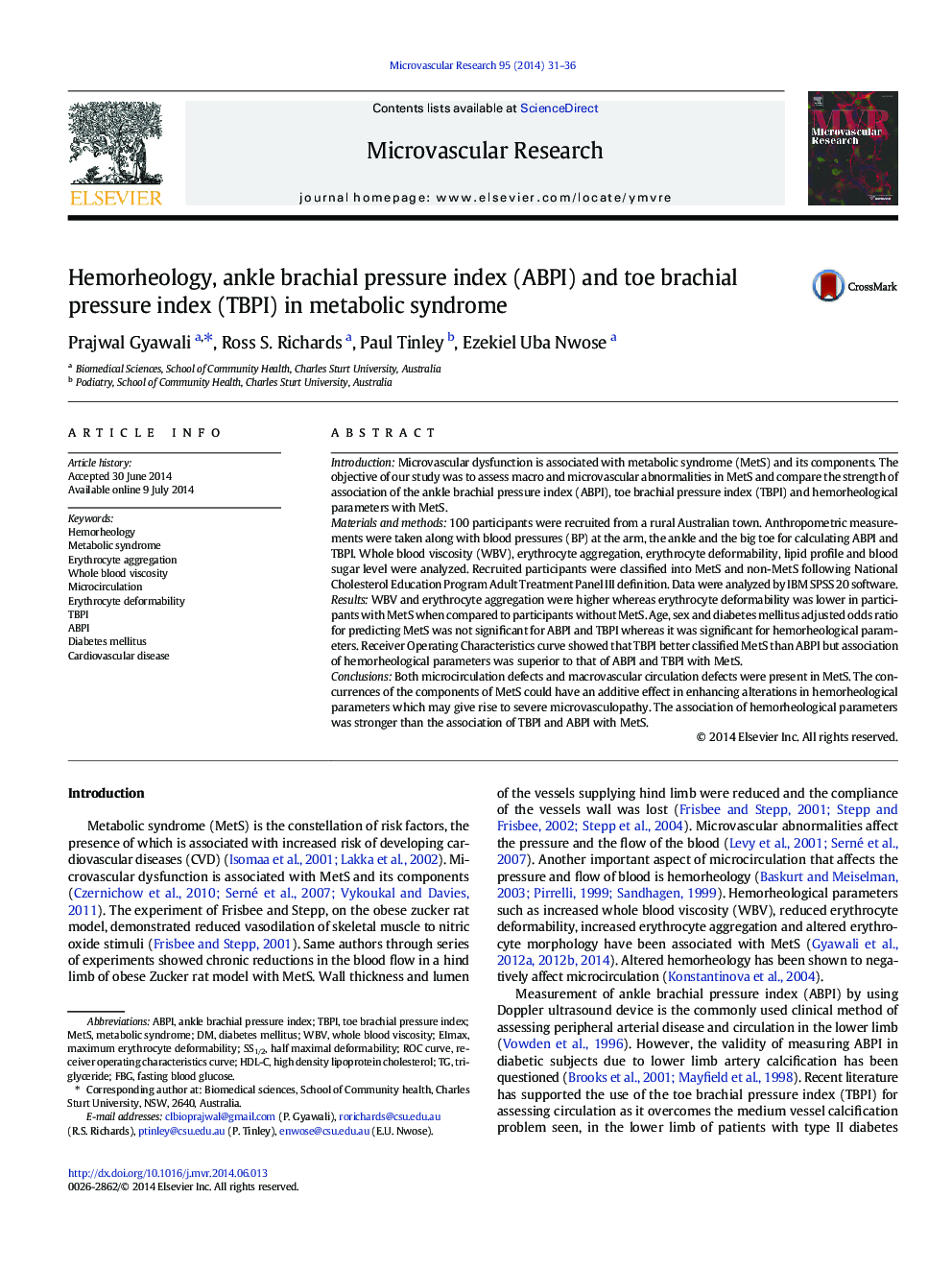| Article ID | Journal | Published Year | Pages | File Type |
|---|---|---|---|---|
| 1994733 | Microvascular Research | 2014 | 6 Pages |
•Erythrocyte aggregation and whole blood viscosity value were increased in MetS subjects.•Toe brachial pressure index value was decreased in MetS subjects.•Increased Ankle Brachial pressure index in MetS could be due to calcified arteries.•Hemorheological parameters were significantly correlated with several MetS components.•All of the MetS components independently predicted erythrocyte hyperaggregability.
IntroductionMicrovascular dysfunction is associated with metabolic syndrome (MetS) and its components. The objective of our study was to assess macro and microvascular abnormalities in MetS and compare the strength of association of the ankle brachial pressure index (ABPI), toe brachial pressure index (TBPI) and hemorheological parameters with MetS.Materials and methods100 participants were recruited from a rural Australian town. Anthropometric measurements were taken along with blood pressures (BP) at the arm, the ankle and the big toe for calculating ABPI and TBPI. Whole blood viscosity (WBV), erythrocyte aggregation, erythrocyte deformability, lipid profile and blood sugar level were analyzed. Recruited participants were classified into MetS and non-MetS following National Cholesterol Education Program Adult Treatment Panel III definition. Data were analyzed by IBM SPSS 20 software.ResultsWBV and erythrocyte aggregation were higher whereas erythrocyte deformability was lower in participants with MetS when compared to participants without MetS. Age, sex and diabetes mellitus adjusted odds ratio for predicting MetS was not significant for ABPI and TBPI whereas it was significant for hemorheological parameters. Receiver Operating Characteristics curve showed that TBPI better classified MetS than ABPI but association of hemorheological parameters was superior to that of ABPI and TBPI with MetS.ConclusionsBoth microcirculation defects and macrovascular circulation defects were present in MetS. The concurrences of the components of MetS could have an additive effect in enhancing alterations in hemorheological parameters which may give rise to severe microvasculopathy. The association of hemorheological parameters was stronger than the association of TBPI and ABPI with MetS.
